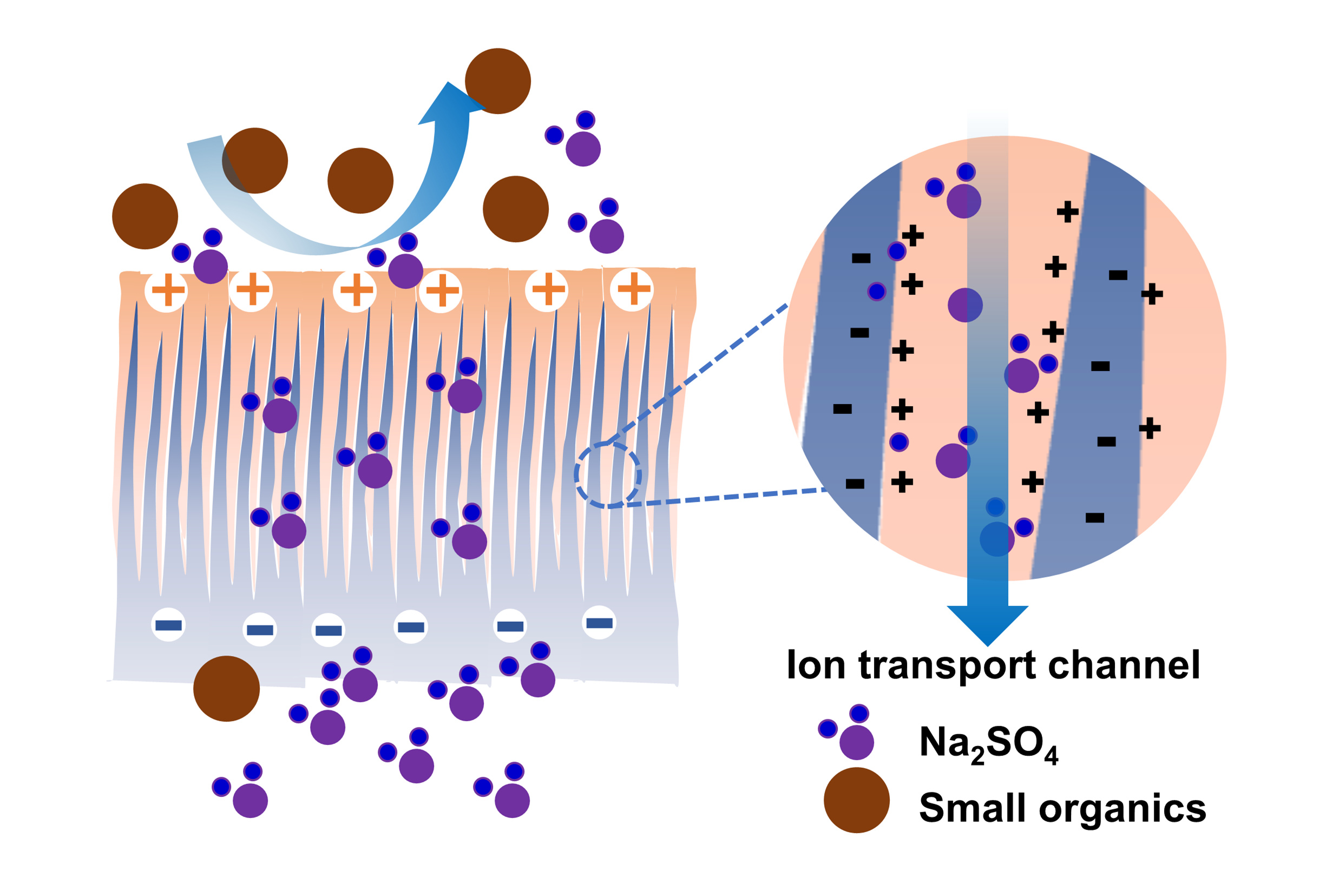| Dec 01, 2022 |
Novel mix-charged nanofiltration membrane for wastewater treatment
(Nanowerk News) A research group led by Prof. WAN Yinhua from the Institute of Process Engineering (IPE) of the Chinese Academy of Sciences has developed a novel "etching-swelling-planting" strategy following interfacial polymerization (IP) to prepare a mix-charged nanofiltration (NF) membrane for wastewater treatment.
|
|
This type of membrane shows high permeation for inorganic salts while maintaining high retention for small organics, which is beneficial to realizing "zero discharge" in high-salinity organic wastewater reclamation.
|
|
The study was published in Environmental Science & Technology ("Planting Anion Channels in a Negatively Charged Polyamide Layer for Highly Selective Nanofiltration Separation").
|
 |
| Improving the separation selectivity of small organics/Na2SO4 of a polyamide nanofiltration membrane by deepening positive charge distribution and narrowing pore size via an "etching-swelling-planting" strategy. (Image: REN Yuling)
|
|
Commercially available nanofiltration membranes are commonly negatively charged, showing high retention for divalent anions (e.g., SO42-). Due to suboptimal spatial charge distribution, current positively charged NF membranes still have a high retention for Na2SO4 and are more prone to be fouled by negatively charged organics in wastewater.
|
|
The researchers attempted to deepen the positive charge distribution and narrow the pore size of polyamide NF membranes via an "etching-swelling-planting" strategy to improve the separation selectivity of small organics/Na2SO4.
|
|
The pristine polyester (PE)-polyamide (PA) NF membranes were first prepared by the IP process using piperazine and tannic acid as aqueous monomers, and trimesoyl chloride and Fe(acac)3 in n-hexane as organic monomers. The PE structure was then etched and hydrolyzed into carboxyl groups and reactive phenolic hydroxyl groups in polyethyleneimine (PEI) alkaline solution, while simultaneously the PEI molecules diffused and were implanted into the swollen polymer network and covalently linked with tannic acid within the separation layer. Consequently, a unique mix-charged membrane with narrow pore size was formed by deeply inserting polyamine polymers into the negatively charged PA layer.
|
|
This finely regulated membrane structure reduces the retention of Na2SO4 (from 97% to 43%) and at the same time increases the retention of glucose (from 45% to 71%). Due to its high surface hydrophilicity and smoothness as well as the preservation of abundant negatively charged groups (i.e., -OH and -COOH) inside the PA layer, the resulting membrane exhibited excellent antifouling performance, even for coking wastewater.
|
|
"Based on mussel-inspired catecholamine chemistry, we developed a new scalable strategy for modification of PA NF membranes," said Prof. LUO Jianquan from IPE, corresponding author of the study. "Our work also emphasizes the importance of charge distribution in precise separation of charged solutes."
|

